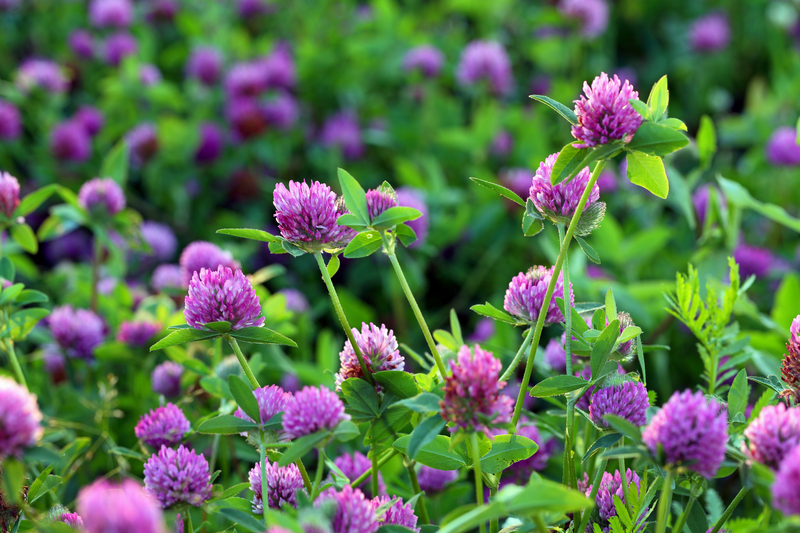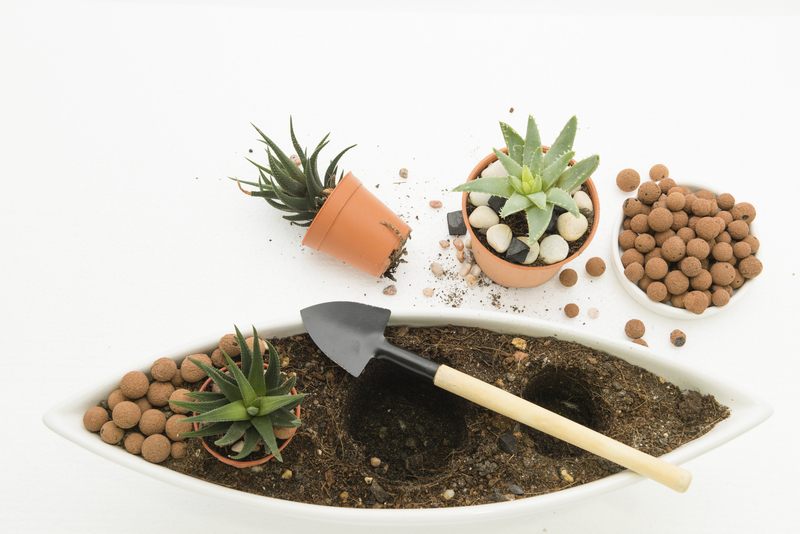Ensure Garden Plants Thrive: Winter Protection Strategies
Posted on 01/06/2025
Ensure Garden Plants Thrive: Winter Protection Strategies
Gardeners know that winter can be a challenging season for their beloved plants. Harsh temperatures, frost, wind, and fluctuating weather can wreak havoc even on the hardiest species. Whether you're a new gardener or a seasoned professional, understanding winter plant protection strategies is essential for maintaining a lush, healthy garden year-round.
This comprehensive guide will explore proven techniques and innovative ideas to ensure your garden plants thrive during winter. We'll delve into different types of plants, covering perennials, annuals, shrubs, and trees, and discuss how to best shield them from winter's extremes.
Understanding the Effects of Winter on Garden Plants
Before jumping into strategies, it's important to recognize how winter conditions affect your greenery. Common threats include:
- Frost Heaving: Freeze-thaw cycles force soil to expand and contract, sometimes pushing plant roots out of the ground.
- Desiccation: Cold winds draw moisture from leaves and tissues, causing plants to dry out.
- Root Injury: Prolonged freezing can kill roots, particularly in shallow-rooted varieties.
- Broken Branches: Ice and snow accumulation can break branches, especially on evergreens and ornamental trees.
- Pest and Disease Pressure: Some pathogens survive winter, preying on weakened plants come spring.
Each of these issues can be mitigated with proper winter protection for garden plants. Let's explore these solutions in detail.

Key Winter Plant Protection Strategies
1. Mulching: The Cornerstone of Garden Winterization
Mulching is perhaps the single most important technique for winterizing garden plants. A thick layer of mulch protects roots from extreme cold and rapid temperature changes.
- Apply Mulch After the First Hard Frost: This prevents rodents from nesting and ensures plants have entered dormancy.
- Choose Organic Mulch: Materials such as shredded leaves, straw, wood chips, or bark are excellent insulating layers.
- Optimal Thickness: Aim for 2-5 inches. Too thick, and you risk smothering roots; too thin, and you lose insulating properties.
Expert tip: In severe climates, consider a double mulch--first with compost, then with straw or leaves--to maximize protection.
2. Covering Plants: Fabrics and Cloches
When unpredictable frosts or sudden cold snaps threaten, physical covers can make the difference between survival and loss.
- Frost Cloths and Blankets: Lightweight, breathable fabrics protect delicate plants without trapping moisture.
- Plastic Covers: Use these in emergencies, but ensure no contact with foliage and vent during sunny days to prevent overheating.
- Reuse Old Sheets: Ideal for sudden overnight dips; remove promptly in the morning.
- Cloches and Cold Frames: Individual glass or plastic domes offer excellent protection for vulnerable seedlings and low-growing crops.
Remember, coverings should not touch the plant directly if there's a danger of freezing. Use stakes or supports to create a tented effect.
3. Water Management: Hydration and Drainage
Many gardeners don't realize that watering before the ground freezes is a powerful winter protection strategy. Well-hydrated plants are more cold-tolerant, but standing water can be equally deadly in frigid temperatures.
- Deep Watering: Soak the soil in late fall, especially for evergreens and newly planted shrubs.
- Ensure Proper Drainage: Improve soil with organic matter and avoid planting in low spots where water accumulates.
- Mulch to Retain Moisture: A mulch layer not only insulates but helps preserve soil moisture over winter.
Tip: Avoid watering when a freeze is imminent, as ice can form around roots.
4. Windbreaks and Barriers
Cold winter winds can make temperatures feel and act even colder, drying out exposed plants. Consider these protective measures:
- Natural Windbreaks: Evergreens or dense hedges planted on the windward side are attractive and effective.
- Temporary Barriers: Burlap screens staked around delicate shrubs or young trees block harmful gusts.
- Move Containers: Relocate potted plants closer to walls or fences to benefit from added warmth and shelter.
Strategic wind protection is essential for winter plant care in exposed or open gardens.
5. Pruning and Structural Support
Pruning before winter sets in can reduce the risk of breakage. Remove dead or diseased branches, and lightly shape evergreens to lessen snow accumulation.
- Support Brittle Plants: Tie together branches of multi-stemmed shrubs to prevent splitting from heavy snow.
- Check Fastenings: Secure tree stakes and loose ties to withstand winter winds.
Proper pruning can also help encourage strong growth once spring returns.
6. Protection for Sensitive and Special Plants
Some plants require extra care to survive harsh winters. Examples include roses, hydrangeas, and tender perennials.
- Rose Cones: Use breathable covers to insulate hybrid teas and other tender varieties.
- Wrap in Burlap: Enclose boxwoods, rhododendrons, and evergreens in burlap for both wind and sun protection.
- Overwinter Indoors: Dig up and pot particularly delicate bulbs (like dahlias or cannas), keeping them dormant in a cool, dark place.
With these targeted strategies, you'll ensure your delicate garden plants thrive in winter and return in full force come spring.
Common Mistakes in Winter Plant Protection (And How to Avoid Them)
Even with the best intentions, gardeners sometimes harm their plants during winterization. Here are the most frequent errors:
- Mulching Too Early: Applying mulch before frost can harbor pests.
- Overwatering: Excess water, particularly in raised beds or containers, leads to root rot.
- Improper Coverings: Heavy plastic left on during sunny days can 'cook' plants.
- Neglecting Young Trees: Failing to protect trunks from frost cracks or rodent damage can kill saplings.
Stay vigilant and adjust your strategies as weather conditions evolve throughout the winter months.
Tailored Protection for Different Types of Garden Plants
Winterizing Perennials
Perennials enter dormancy but benefit from extra care. After the first freeze:
- Cut back dead foliage (unless it provides seed for wildlife).
- Mulch as described earlier.
- Mark their locations to avoid damaging crowns when spring planting.
Annuals in Winter
Most annuals complete their life cycle in one season, so focus on removing spent plants and mulching the soil to prevent erosion and weed growth. However, cool-season annuals (like pansies or ornamental kale) may persist with extra covering during cold snaps.
Protecting Shrubs and Trees
For established shrubs and trees:
- Water thoroughly in late fall.
- Mulch around the base, but keep away from trunks to prevent rot.
- Wrap young or soft-barked tree trunks with commercial tree wrap to deter sunscald and critters.
Winter Care for Container Plants
Containers are particularly vulnerable as their roots are exposed on all sides.
- Group pots together in a sheltered location.
- Bury pots in the ground or wrap with insulating materials like bubble wrap or burlap.
- Water lightly during dry spells, but don't oversaturate.
Edible Gardening: Overwintering Vegetables and Herbs
Cold frames, hoop houses, and row covers extend the growing season and allow for overwintering greens, carrots, and hardy herbs. Mulch heavily or use straw bales as perimeter walls for extra warmth.
Organic and Eco-Friendly Winter Protection Methods
Sustainable gardening practices benefit both your plants and the environment. Key eco-friendly strategies include:
- Recycling Leaves and Grass Clippings: Use what your landscape provides as mulch and insulating material.
- Natural Barriers: Planting windbreaks offers seasonal habitat for wildlife.
- Compost-Based Mulch: Boosts soil health while protecting roots.
Reducing plastic use and minimizing chemical treatments ensures your garden remains a healthy ecosystem, even in winter.

Frequently Asked Questions: Garden Plant Winter Protection
- When should I start preparing my garden for winter?
Begin once temperatures consistently drop below freezing at night and plants have started to go dormant. This varies by region but typically occurs in late fall. - Should I fertilize before winter?
Avoid fertilizing late in the season, as it encourages tender new growth susceptible to winter damage. Instead, fertilize in early fall or wait until spring. - Can I protect tender plants with straw bales?
Yes. Surrounding tender plants with straw bales forms an insulating wall and can be combined with other covers for maximum protection. - What are the signs of winter damage?
Look for brown or blackened leaves, split bark, wilted branches, and plants pushed out of the ground by frost heave.
Conclusion: Secure a Healthy Start for Spring
Winter need not be the end of gardening activities. By implementing these winter garden protection strategies, you will cushion your plants against the harshest elements and give them the best chance to surge back to life in spring. Remember:
- Mulch is essential for root protection
- Coverings shield against frost and wind
- Proper watering and pruning prevent common winter problems
- Special care for vulnerable plants pays great dividends
With thoughtful preparation and attention to detail, you can ensure your garden plants thrive throughout winter and reap the rewards of a beautiful, resilient landscape year after year.
Invest in winter protection--you'll thank yourself when your garden wakes up stronger than ever!

